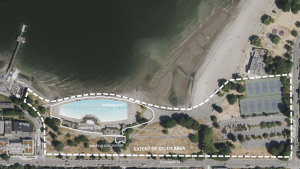Demand for industrial property in Greater Vancouver Area (GVA) remains strong while the supply of existing space and land is severely limited, according to a 2019 second-quarter report by Colliers International.
For the ninth consecutive quarter, the industrial vacancy rate in the GVA is below two per cent – at 1.5 per cent to be exact, the report notes, leading to upward pressure on land values, lease rates and sale pricing.
Kirk Kuester, executive managing director of Colliers in B.C., notes the scenario is good for landlords, as they can charge higher rents and demand better leasing options, but is bad for companies seeking space.
“From an economic point of view the local vacancy rate shows there is very strong demand from businesses which is good, but it also causes concern because the vacancy rate is so low that it is difficult for businesses to expand and meet their full potential. As a result, economic growth is being constrained.
“This is bad for tenants as they have so few options and, in many instances, must accept terms that are less favourable.”
The situation, said Kuester, is driven in large part by logistics and e-commerce companies such as Amazon snapping up large blocks of space, and the fact space is limited in the GVA because it is surrounded by mountains, water, the U.S. border, and Agricultural Land Reserve.
Meantime, the Port of Vancouver has also had a second consecutive year of record-setting cargo volumes due to growth in Canadian trade, said Kuester, noting that one in three dollars of Canada’s trade beyond North America goes through the port, and with more activity comes an increase in use of space.
There is also additional pressure as the area has also turned into a prime destination for the film industry. While real estate is cyclical with periods of booms and busts, Kuester said the present situation shows no signs of slowing as there is sustained demand for space driven largely by the increasing trend of e-commerce.
“In addition, it is a bit of a perfect storm with the existing supply of land reaching critically low levels just as demand for space increased drastically from e-commerce and increased trade levels at the Port of Vancouver.”
Some developers are now testing the market with aggressive lease rates or are being more selective with the type of tenant they will accept, demanding, for example, that they take longer leases, said Kuester. Oxford Properties, he noted, has a vacant building in the Riverbend Business Park with more than 150,000-square-feet of industrial space and another in the park but is being very picky about the occupant.
“They’re choosing to sit and wait for the perfect tenant that will pay the optimal amount of rent so it is much more challenging for occupiers,” said Kuester.
A trend that has taken off in recent years is strata developments, which are multi-unit industrial buildings. An example, said Kuester, is PC Urban Properties Corp.’s IntraUrban Evolution, a four-storey, 105,000-square-foot development on the eastern edge of False Creek Flats on the edge of downtown Vancouver.
“There will continue to be more developments and in particular more strata developments due to developers being able to pay more for land when developing strata type developments as the return is greater on a price per square foot. However, land is severely limited, and at some point the GVA market will run out of land and development will start to decline, not due to lack of demand but a lack of supply.”











Recent Comments